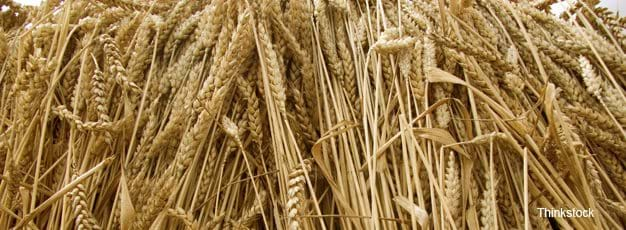USDA’s Karnal Bunt Regulatory Program Protects U.S. Wheat Exports

Karnal bunt is a wheat fungus known to occur in India, Mexico, and a few areas of the United States. Many countries free of Karnal bunt have imposed restrictions on imports of infected wheat. USDA responded by issuing certificates declaring that U.S. wheat shipments are from areas where Karnal bunt is not known to occur. USDA imposes quarantines to contain the spread of the disease and coordinates an annual voluntary survey of grain elevators to check for Karnal bunt. USDA issues the certificates based on the survey and use of quarantines. Karnal bunt seldom results in significant yield loss and does not produce toxic compounds that pose risks to animal or human health. However, if more than 3 percent of the wheat is infected, the flour milled from the wheat tends to give off a fishy odor.
Possible Karnal bunt contamination carries significant financial risk for grain elevators because the wheat harboring the fungus must be sold as low-priced feed. Therefore, some elevator operators advocate ending the certificate program. ERS researchers compared estimated U.S. wheat exports without a certification program with USDA projections (with certification) for 2011-18, commonly referred to as the baseline. If all countries requiring a Karnal bunt certificate do not import U.S. wheat (and assuming that prices do not adjust), U.S. wheat exports would fall an estimated 39 percent below USDA baseline projections in 2011. In subsequent years, researchers expect some of these Karnal bunt-certificate countries would resume U.S. wheat imports. In 2012-18, wheat exports are projected to decline by 27 percent annually.
Because the reduced demand would result in lower prices, importers who do not ban U.S. wheat would increase demand for U.S. wheat. Consequently, the actual decline in U.S. exports would average 15.1 percent per year over the 2012-18 period.
Reduced U.S. wheat exports would be partially offset by increased demand for lower priced domestic wheat for feed. Reduced wheat production, coupled with lower prices, would reduce annual cash receipts from farm marketings by 12.4 percent on average from the baseline. As wheat area declines, the area planted to other crops would increase, causing the prices of other crops to fall, further lowering net farm income. Under this scenario, the cumulative reduction of national net farm income from 2011 to 2018 would be $8.0 billion, or an average of 1.2 percent per year.
Wheat Outlook: August 2010, by Gary Vocke, Edward Allen, and Michael Price, USDA, Economic Research Service, August 2010
Wheat, by Andrew Sowell , Bryn Swearingen, and Todd Hubbs, USDA, Economic Research Service, August 2024

